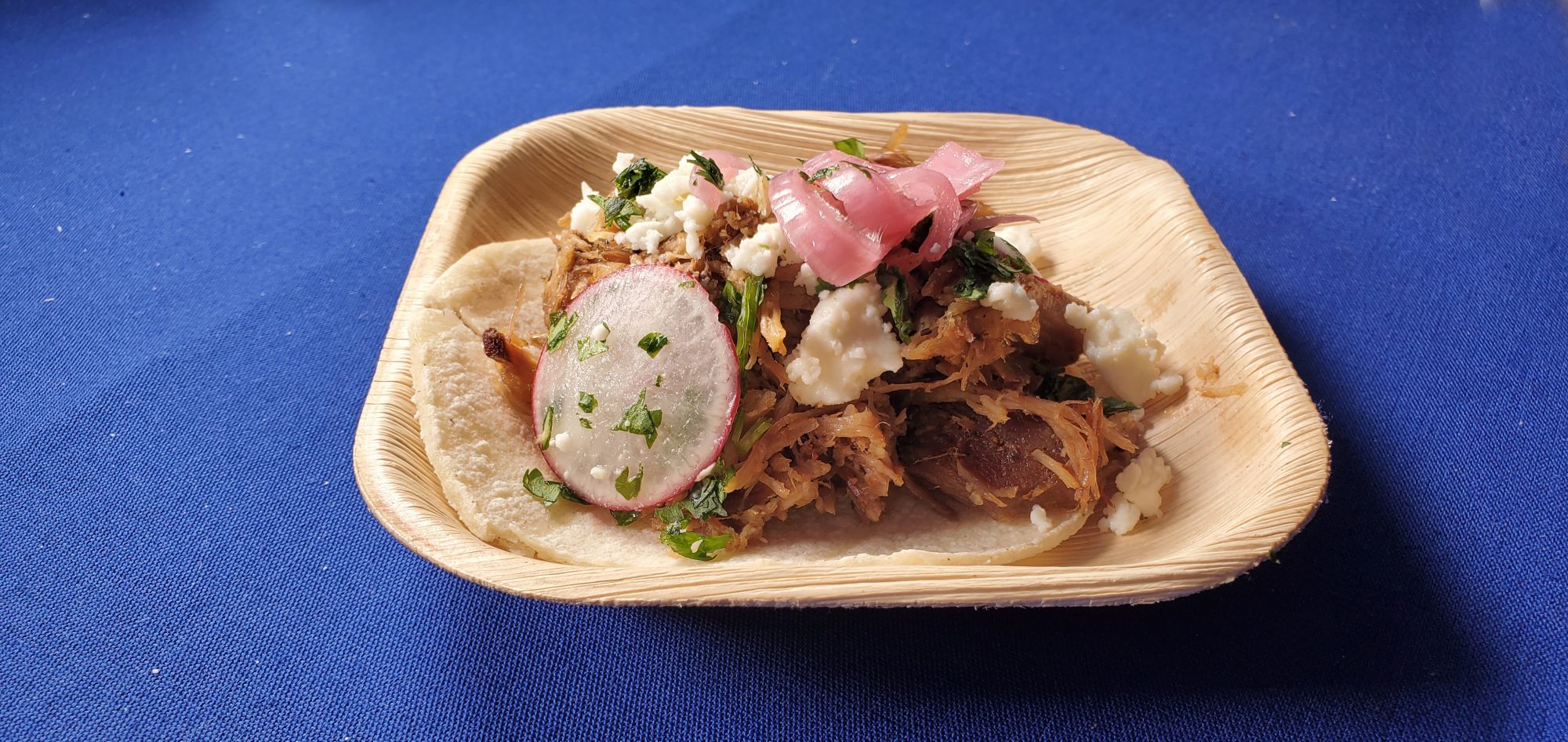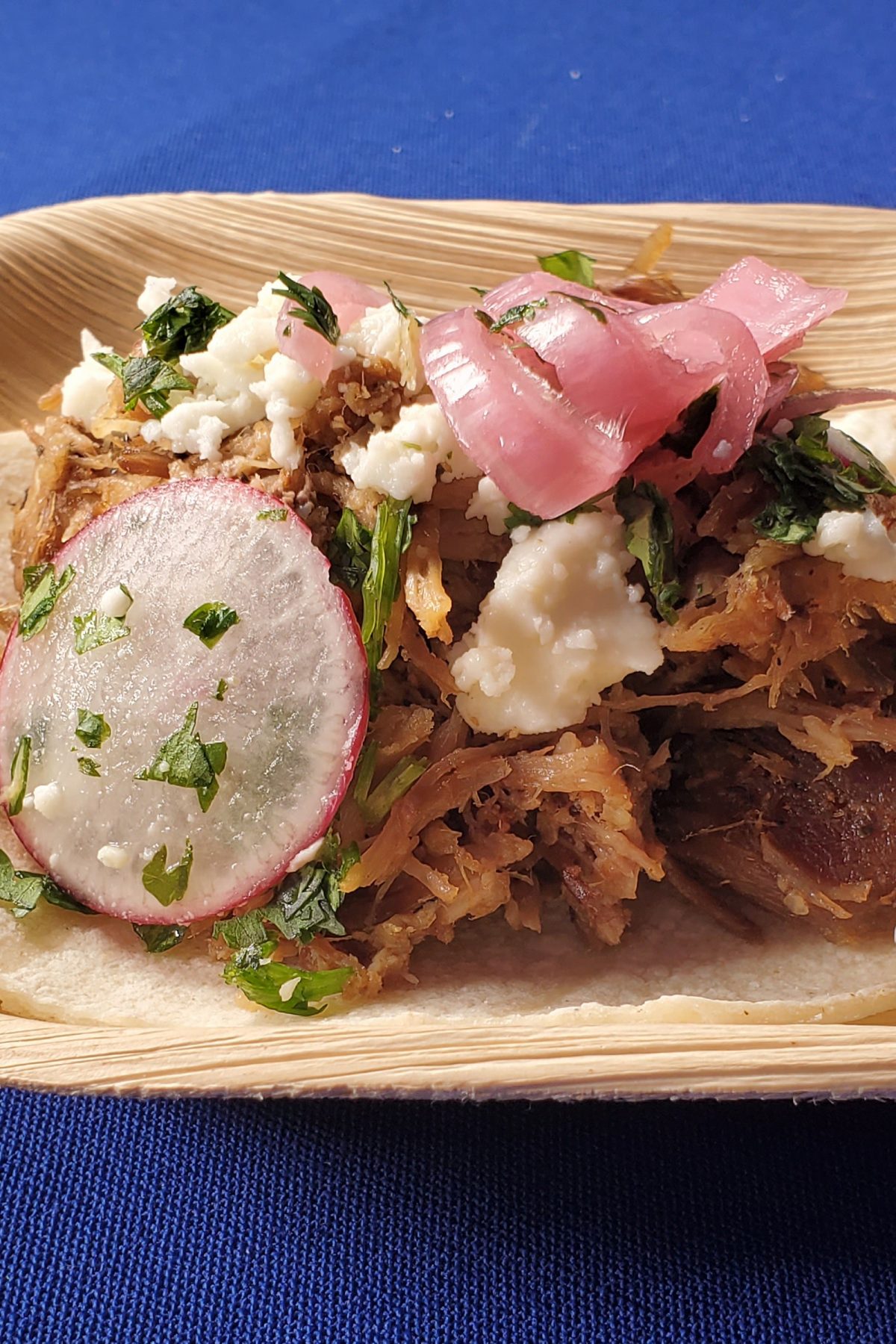Pernil Tacos by Evan Rodriguez

Succotash Bowls by Azja Griffin
October 25, 2021
Indonesian Shrimp Fried Noodle by Regine Tija
October 25, 2021Pernil Tacos by Evan Rodriguez
This delicious recipe was developed by a student of the Food and Finance High School, Evan Rodriguez, for the 2021 Food Education Fest.
For more information, please visit the Food Education Fund's website:
https://www.foodeducationfund.org/

Ingredients
Directions
Score the fat on the pork shoulder in a criss-cross hatch fashion. Then, cut deeply once in each direction across the pork, like you are going to cut it into four quarters, but then leave them attached at the bottom. Use a sharp knife to make about 20 slits, about 1 inch deep, all over the meat. Place the meat in a 13 x 9 baking pan, or another shallow baking pan large enough to comfortably hold the meat with some space around it.
Combine the oil, garlic, fresh and dried oregano, Adobo, paprika, salt and pepper. Rub the mixture all over the meat, working it all over the surface and into the slits. Cover the pork with foil and refrigerate overnight
Bring the pork to room temperature, about 1 hour. Meanwhile, preheat the oven to 300F°. Bake the pork, covered for 3 hours, then remove the foil and bake for another 3 to 4 hours at the same temperature, until the pork is fall-apart tender. The internal temperature should be at least 165°, but it may be higher, which is fine – it’s most important that the meat is super tender. If you would like a crustier exterior, turn the heat to 375°F and bake for another 20 to 30 minutes, until the outside of the pork has a nice browned crust.
Let the pernil sit for at least 20 minutes, then use your fingers (if it’s not too hot; some people like to wear kitchen gloves to protect their fingers from the heat), or two forks to pull the meat into chunks. Sprinkle the meat with the lemon and orange juice, season with additional salt and pepper.
Top with pickled onions, freshly chopped cilantro, thinly sliced radishes, and queso freco
Shop this recipe
Ingredients
Directions
Score the fat on the pork shoulder in a criss-cross hatch fashion. Then, cut deeply once in each direction across the pork, like you are going to cut it into four quarters, but then leave them attached at the bottom. Use a sharp knife to make about 20 slits, about 1 inch deep, all over the meat. Place the meat in a 13 x 9 baking pan, or another shallow baking pan large enough to comfortably hold the meat with some space around it.
Combine the oil, garlic, fresh and dried oregano, Adobo, paprika, salt and pepper. Rub the mixture all over the meat, working it all over the surface and into the slits. Cover the pork with foil and refrigerate overnight
Bring the pork to room temperature, about 1 hour. Meanwhile, preheat the oven to 300F°. Bake the pork, covered for 3 hours, then remove the foil and bake for another 3 to 4 hours at the same temperature, until the pork is fall-apart tender. The internal temperature should be at least 165°, but it may be higher, which is fine – it’s most important that the meat is super tender. If you would like a crustier exterior, turn the heat to 375°F and bake for another 20 to 30 minutes, until the outside of the pork has a nice browned crust.
Let the pernil sit for at least 20 minutes, then use your fingers (if it’s not too hot; some people like to wear kitchen gloves to protect their fingers from the heat), or two forks to pull the meat into chunks. Sprinkle the meat with the lemon and orange juice, season with additional salt and pepper.
Top with pickled onions, freshly chopped cilantro, thinly sliced radishes, and queso freco

